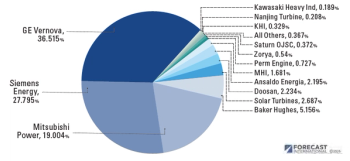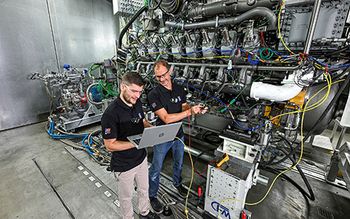
A case for carbon capture on gas too
SNL published an article entitled “As gas tops coal for carbon emissions, Sierra Club sees next climate fight”, based on an interview with Lena Moffitt. The article was written by Annalee Grant on August 18, 2016 and can be found on the internet.
(
The article included some of the familiar EIA data and charts as follows:
According to SNL, the Sierra Club just acknowledged that…
"As we're trying to meet our climate goals, it is very clear that we cannot afford to expand infrastructure and reliance on fossil fuels, including gas."
Other reported comments and observations included:
"In 2015, natural gas consumption was 81% higher than coal consumption, and their emissions were nearly equal. Both fuels were associated with about 1.5 billion metric tons of energy-related CO2 emissions in the United States in 2015," the EIA report said.
"In addition to this being a significant wake-up call for hopefully all Americans, it's also a real indication of where the next climate fight is going to be and that really is with gas"
"As we're trying to meet our climate goals, it is very clear that we cannot afford to expand infrastructure and reliance on fossil fuels, including gas."
"It's incredibly encouraging that our country has been able to move away from coal in the way that it has, and that's a trend that we want to see of course for the climate benefits and the public health benefits"
"At the same time, we do need to ensure that that energy is not backfilled with gas."
"Unfortunately, the theory that gas can provide an energy bridge has stuck around too long, and is frankly just not true."
"If you take the full life cycle view, gas could be just as bad for the climate as coal."
The extraction of natural gas is also responsible for methane emissions, which the EPA has said has a climate change impact 25 times greater than carbon over a 100-year period.
Further EIA research anticipates a 55% increase in gas extraction and a 24% hike in gas consumption by 2040, according to Moffitt, who expressed concern that the expansion could push the U.S. well over the greenhouse gas reductions pledged in Paris in December.
"Just that consumption alone, if you consider the methane emissions, will cause us to blow past our international climate goals, which is unacceptable if we want to keep this planet in a livable state."
She worries that reducing coal in favor of gas could mean trading one greenhouse gas for another.
Looking more closely at coal- and natural gas-fired power generation, coal remains the top emitter of carbon, although those emissions are trending downward as coal capacity shrinks.
Carbon emissions from natural gas generation have risen moderately, as more gas capacity has been added, but coal in 2015 still exceeded natural gas by 904 million tons of emitted carbon, according to SNL Energy data.
The Sierra Club will respond by doubling down on efforts to both fight investments in gas and prioritize renewables and energy efficiency.
SNL observed that, “News of rising carbon emissions from gas consumption was greeted with dismay by the Sierra Club, which has maintained a major campaign against coal-fired generation. The group has also lobbied against the expansion of natural gas infrastructure, and Beyond Dirty Fuels Campaign Director Lena Moffitt said the EIA data underscores the importance of that fight.”
This is the data behind the first EIA chart. To be clear, the ~100 Quad includes all energy-related use.
A more detailed and fascinating breakdown of that ~100 Quad U.S. Energy Consumption is available from the Lawrence Livermore National Laboratory (LLNL).
The energy-related terminology in these data encompasses the natural gas consumption at 27.27 Quads from the data table, or 28.3 Quads from the LLNL chart, with the pathways as shown.
Natural gas consumption for Power Generation was 9.99 Quads in 2015.
The efficiency of the primary energy conversions, shown as percentages in red are:
- Electricity generation (all fuels) - 33.0%
- Residential - 64.9%
- Commercial - 65.0%
- Industrial - 80.0%
- Transportation - 21.0%
The two areas with the greatest opportunity improvement in overall efficiency of energy use are the power sector and transportation sectors. Both of these will increase the role of and pressure on CO2 emitted for electricity production.
It is completely disingenuous, but at the same time, not the least bit surprising for the Sierra Club to cite the new EPA Methane Rule, yet remain completely silent on the emissions from natural gas fired power plants.
The CO2 emissions for power generation were 1891.3 Million metric tonnes (1.891 Gt) in 2015. Natural gas power generation accounted for 524 Mmt (0.524 Gt), or 27.7% of the total.
The May 12, 2016 EPA Final Ruling to Reduce Emission from the Oil & Gas Industry, which they do allude to, has a stated goal of reducing emission by 40-45% from 2012 levels, by 2025. The rule is intended to capture 510,000 short tons of methane, with the equivalent of 11 Million metric tonnes of CO2 (0.011Gt).
Carbon Capture is not now, nor has it ever been in the EIA or the Sierra Club narrative. Successful deployment of CCS would serve to enable coal. Such an outcome would be intolerable for Sierra Club, which is why they ignore its potential deployment. CCS is the real “Bridge”.
The EIA Reference Case forecasts data is shown below indicating 653 Million metric tonnes (.653 Gt), of CO2 from natural gas fired power plants in 2040, dwarfing the impact of methane leakage.
The forecast includes a 45% increase in power from natural gas, but only indicates only 24% increase in CO2 emissions, with natural gas accounting for 35.9% of the supply.
The specific output values expressed in lb-CO2/MWh are easily calculated:
Natural Gas: 653.0 Mmt x 2205 lbs/tonne/1617.9 BkWh = 890 lb-CO2/MWh
Coal: 885.0 Mmt x 2205 lbs/tonne/ 884.3 BkWh = 2207 lb-CO2/MWh
These values are somewhat consistent with both coal-fired power plants without CCS at 2200 lb-CO2/MWh, and some mix of natural gas combined and simple cycle units without CCS, at 890 lb-CO2/MWh.
The Supercritical Pulverized Coal plants operating on sub-bituminous coal are closer to 1800 lb-CO2/MWh. The 890 lb-CO2/MWh for natural gas would represent a mix of approximately 70% combined cycle and 30% simple cycle units.
If CCS were to be applied at 90% capture, the 1551 Mmt is value would become 155 Mmt and the resulting U.S. total would become 4900 Mmt (4.9 Gt).
It should be noted that the 1551 Mmt CO2 emission for electric power is 3-8 times the 200-500 level required to reach the 2°C 450 ppmv goal. We will need CCS on both coal and gas to reach this level.
The U.S. “target”, if there is such a thing, is 1.3 Gt. These data suggest that we are closer to a 4 or 5°C trajectory.
Newsletter
Power your knowledge with the latest in turbine technology, engineering advances, and energy solutions—subscribe to Turbomachinery International today.





